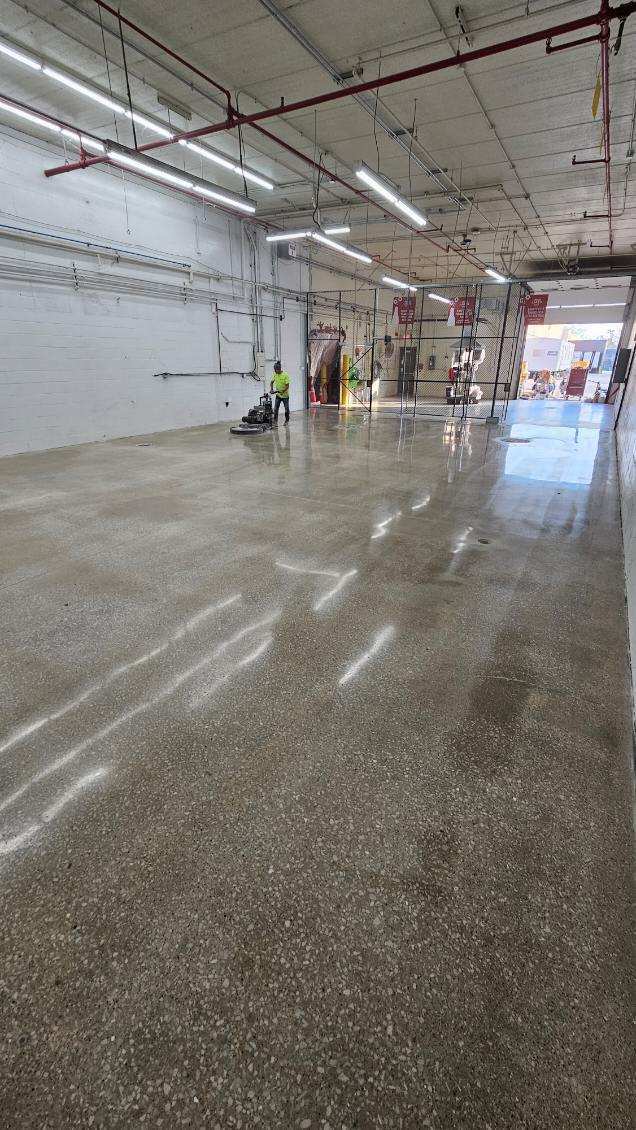
When it comes to achieving polished concrete floors that last, densification isn’t just a step in the process—it’s the foundation for long-term performance. If you're considering polished concrete for your space, understanding how a polished concrete densifier works (and why it's necessary) can help you make a smarter investment.
In this blog, we’ll explore what densifiers do, how they work, and why skipping this step can leave you with a floor that’s more fragile than functional.
What Is a Polished Concrete Densifier?
A polished concrete densifier is a chemical hardener that’s applied to concrete during the polishing process. Its job is to fill the microscopic pores in the concrete surface, creating a denser, harder, and more durable floor.
Most densifiers are made from lithium, sodium, or potassium silicate. Once applied, they react with the free lime and calcium hydroxide in the concrete, forming a new crystalline structure—typically calcium silicate hydrate (C-S-H). This is the same material that gives concrete its natural strength.
By chemically bonding within the slab, densifiers improve the surface’s resistance to dusting, wear, and moisture—all without changing the appearance of the floor.
Why Densification Matters in Polished Concrete
Polished concrete might look great because of its shine, but its performance depends heavily on how well it was densified. Here’s why this step matters:
1. Increases Surface Hardness
Raw concrete is porous and relatively soft, especially near the surface. A polished concrete densifier strengthens the floor, making it more resistant to foot traffic, rolling loads, and abrasions from dirt and debris.
2. Enhances Gloss and Clarity
Polishing concrete is like sanding wood—the smoother and denser the surface, the more shine you’ll get. Densifiers make the surface more uniform, which allows for a clearer, crisper finish after polishing.
3. Reduces Dusting
Over time, untreated concrete tends to shed fine particles through a process called efflorescence. This leads to surface dust that can compromise air quality indoors. Applying a densifier strengthens the concrete surface and significantly reduces this dusting, helping maintain a cleaner, more controlled environment.
4. Creates a Less Porous Surface to Block Moisture
While not a moisture barrier, a densified concrete floor absorbs less water and resists staining better than untreated concrete. That makes it easier to clean and less prone to discoloration or mildew in damp environments.
When in the Process Is Densifier Applied?
Densification typically occurs after the initial grinding stages and before final polishing begins. This allows the densifier to penetrate evenly, react properly, and prepare the floor for high-gloss polishing.
If densification is skipped—or performed too early or too late—the result could be a weaker surface that doesn’t polish well or hold up over time.
How Long Does a Polished Concrete Densifier Last?
Unlike a topical coating, a polished concrete densifier becomes part of the slab itself. Once applied and cured, it doesn't wear off or peel like paint or sealants might. That means one properly executed application will last the life of the floor.
Of course, the longevity of your polished concrete also depends on maintenance, traffic, and environmental conditions. But densified concrete gives you the strongest possible starting point.
Densifier Types: Which One Is Right for Your Floor?
There are a few types of silicate-based densifiers available:
- Sodium silicate: Cost-effective and commonly used but may require more scrubbing or multiple applications.
- Potassium silicate: Faster-reacting and useful in some industrial applications.
- Lithium silicate: The most advanced and stable option—penetrates evenly, reacts quickly, and has low risk of surface whitening or streaking.
While all three will harden concrete, lithium silicate is often preferred for polished concrete due to its consistency and compatibility with high-end finishes.
Choosing the right densifier often depends on your floor’s age, condition, and intended use. An experienced contractor can guide you toward the best fit for your space. At Customcrete, we tend to use a silicate blends to get the best qualities out of all of them.
Polished Concrete Densifier vs. Sealer: What’s the Difference?
It’s common to confuse densifiers with sealers, but they serve different purposes:
- A densifier penetrates into the concrete to chemically harden it.
- A sealer is typically a film-forming or penetrating treatment that protects the surface from water, stains, or chemicals.
Some polished concrete systems include both. The densifier is critical for enhancing the concrete’s durability and mechanical performance, while the sealer—when used—adds an extra layer of protection and can help maintain the surface’s appearance over time.
Final Thoughts: Densification Is Not Optional
Polished concrete looks clean, modern, and professional—but the shine you see is only as good as the preparation underneath it. Skipping densification can lead to premature wear, surface dulling, and increased maintenance over time.
By using a high-quality polished concrete densifier and applying it at the right stage in the process, you extend the life of your floor and get better results from polishing. Whether you’re finishing a retail space, warehouse, or office floor, densification is what gives polished concrete its long-term value.
If you’re evaluating polished concrete for your facility, ask about the densifier being used. It’s not just a technical step—it’s a critical part of the investment you’re making in your space. Request a quote from CustomCrete today!

Topics:










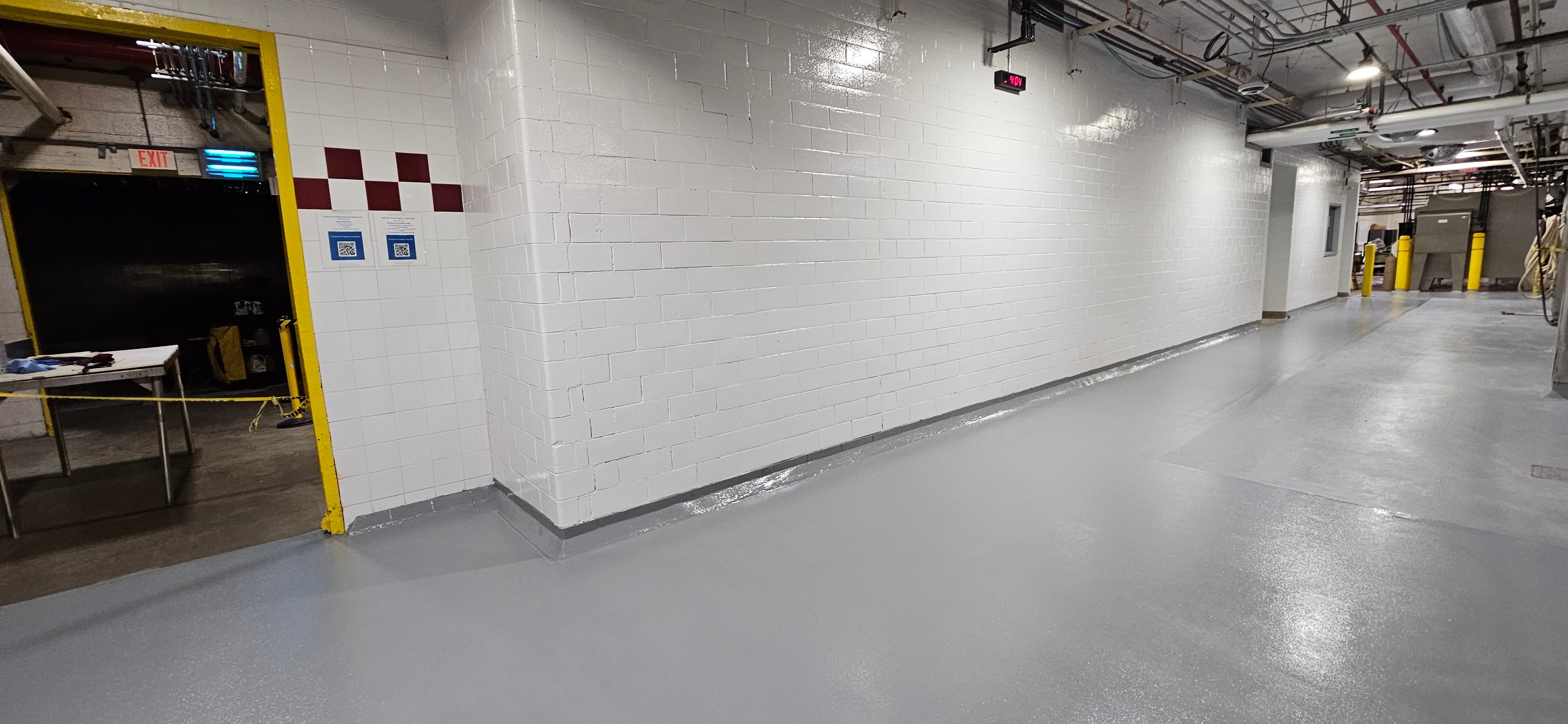









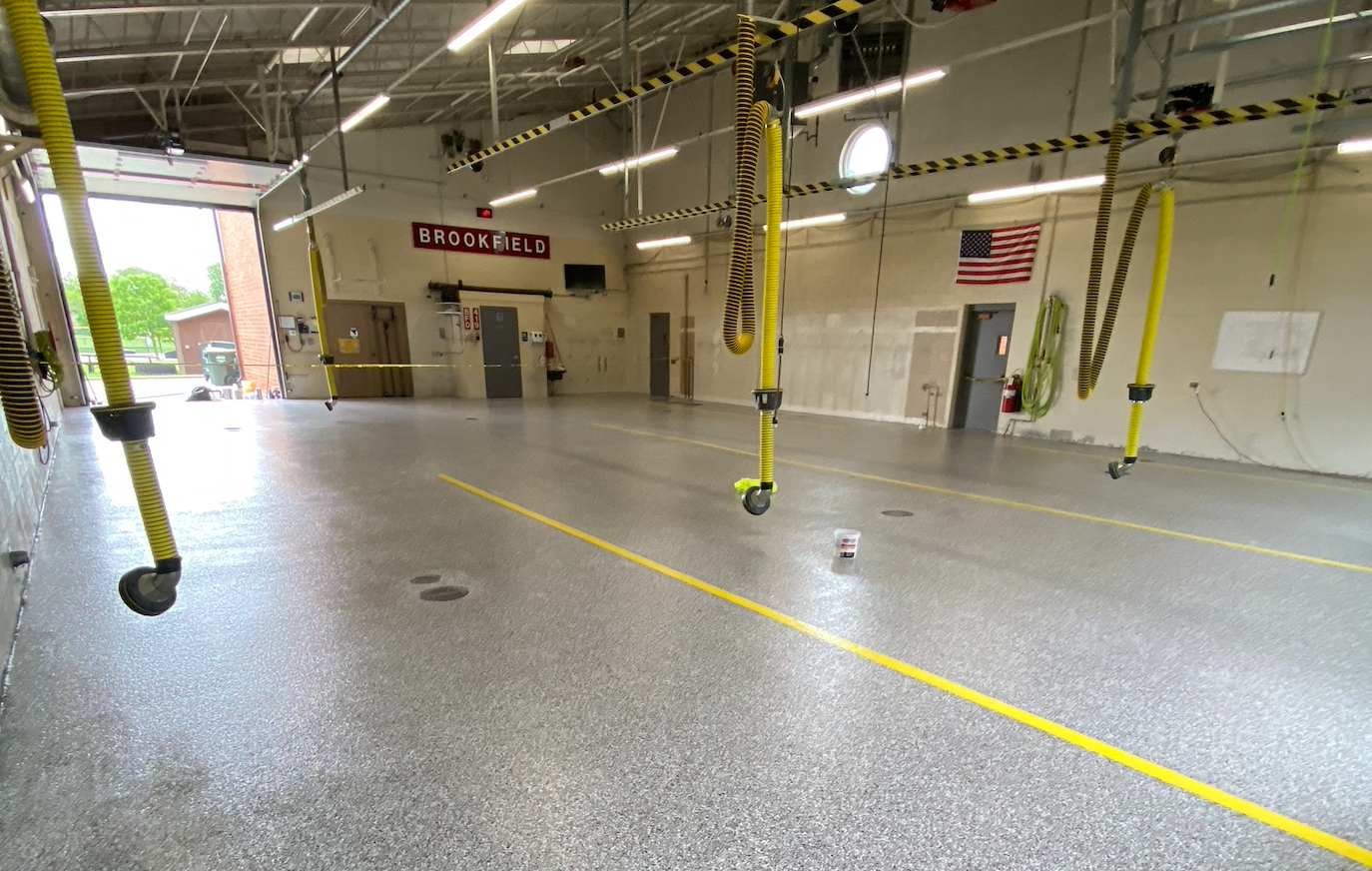
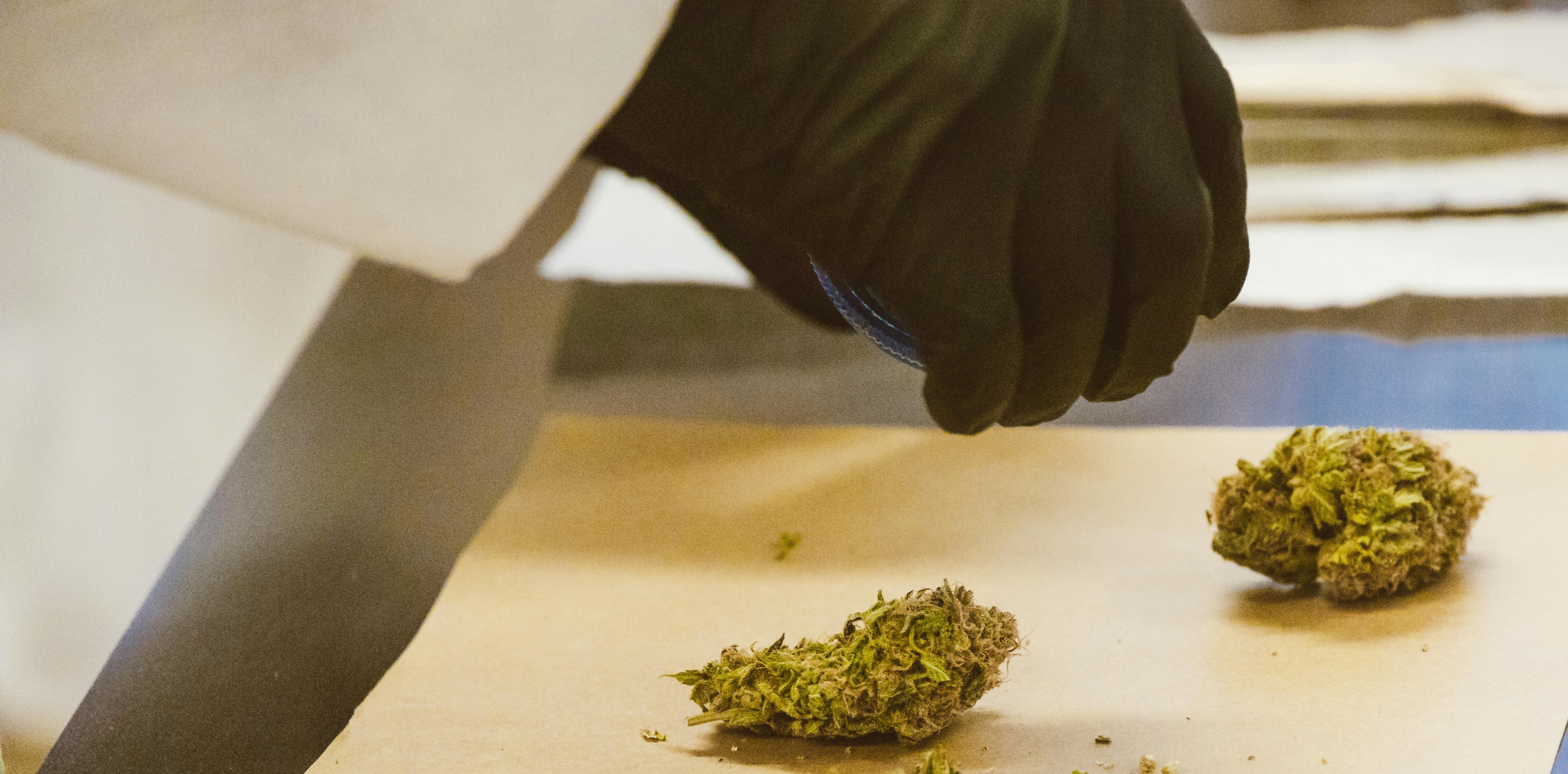
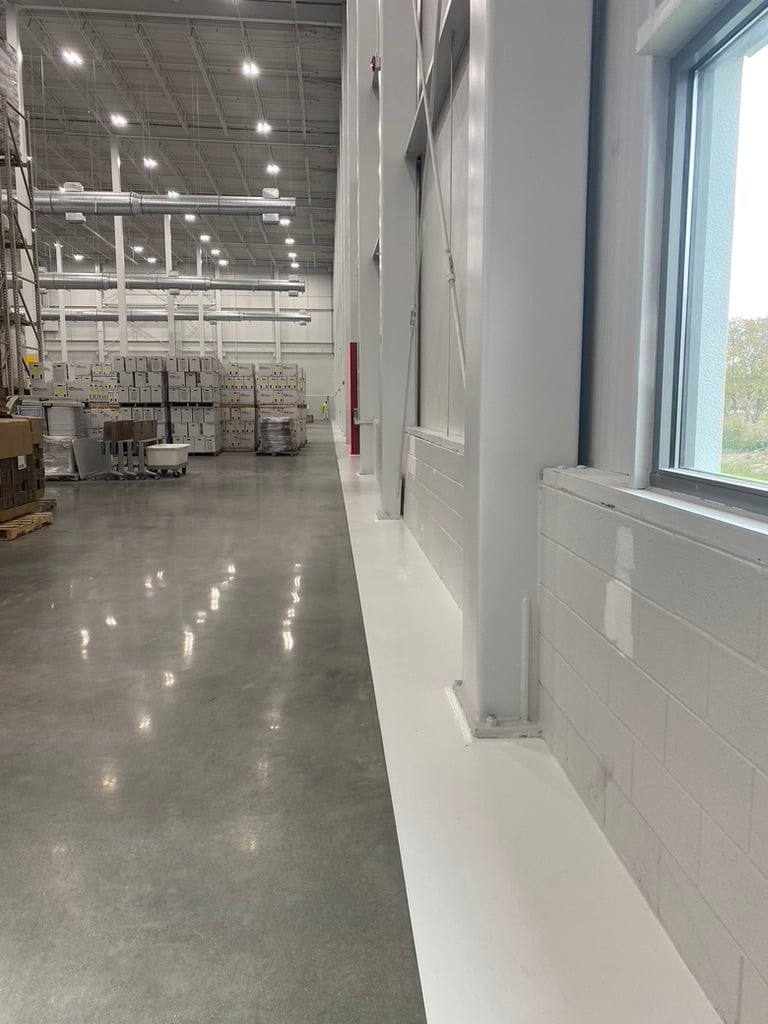
.jpeg?width=360&height=253&name=IMG_0701%20(1).jpeg)